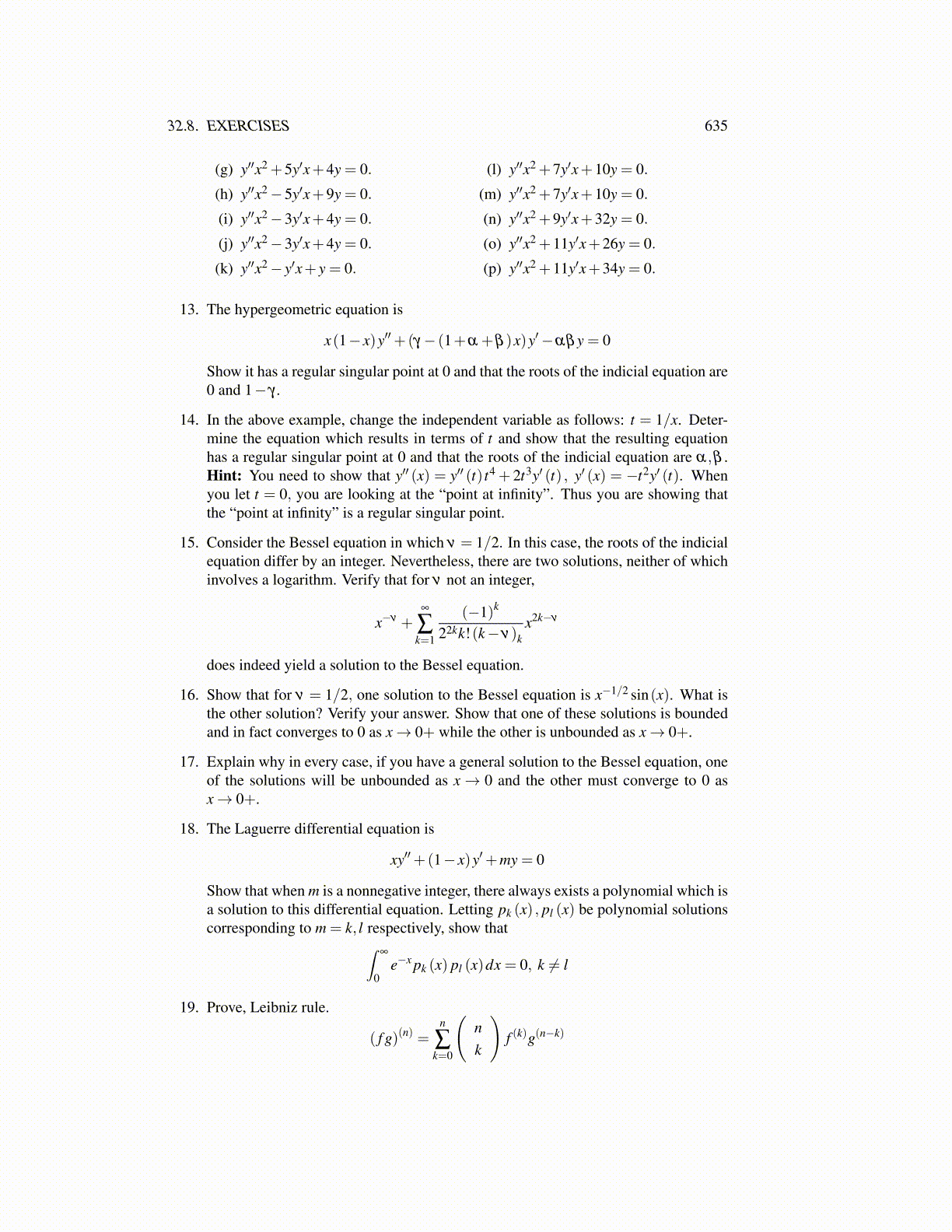
32.8. EXERCISES 635
(g) y′′x2 +5y′x+4y = 0.
(h) y′′x2−5y′x+9y = 0.
(i) y′′x2−3y′x+4y = 0.
(j) y′′x2−3y′x+4y = 0.
(k) y′′x2− y′x+ y = 0.
(l) y′′x2 +7y′x+10y = 0.
(m) y′′x2 +7y′x+10y = 0.
(n) y′′x2 +9y′x+32y = 0.
(o) y′′x2 +11y′x+26y = 0.
(p) y′′x2 +11y′x+34y = 0.
13. The hypergeometric equation is
x(1− x)y′′+(γ− (1+α +β )x)y′−αβy = 0
Show it has a regular singular point at 0 and that the roots of the indicial equation are0 and 1− γ .
14. In the above example, change the independent variable as follows: t = 1/x. Deter-mine the equation which results in terms of t and show that the resulting equationhas a regular singular point at 0 and that the roots of the indicial equation are α,β .Hint: You need to show that y′′ (x) = y′′ (t) t4 + 2t3y′ (t) , y′ (x) = −t2y′ (t). Whenyou let t = 0, you are looking at the “point at infinity”. Thus you are showing thatthe “point at infinity” is a regular singular point.
15. Consider the Bessel equation in which ν = 1/2. In this case, the roots of the indicialequation differ by an integer. Nevertheless, there are two solutions, neither of whichinvolves a logarithm. Verify that for ν not an integer,
x−ν +∞
∑k=1
(−1)k
22kk!(k−ν)kx2k−ν
does indeed yield a solution to the Bessel equation.
16. Show that for ν = 1/2, one solution to the Bessel equation is x−1/2 sin(x). What isthe other solution? Verify your answer. Show that one of these solutions is boundedand in fact converges to 0 as x→ 0+ while the other is unbounded as x→ 0+.
17. Explain why in every case, if you have a general solution to the Bessel equation, oneof the solutions will be unbounded as x→ 0 and the other must converge to 0 asx→ 0+.
18. The Laguerre differential equation is
xy′′+(1− x)y′+my = 0
Show that when m is a nonnegative integer, there always exists a polynomial which isa solution to this differential equation. Letting pk (x) , pl (x) be polynomial solutionscorresponding to m = k, l respectively, show that∫
∞
0e−x pk (x) pl (x)dx = 0, k ̸= l
19. Prove, Leibniz rule.
( f g)(n) =n
∑k=0
(nk
)f (k)g(n−k)